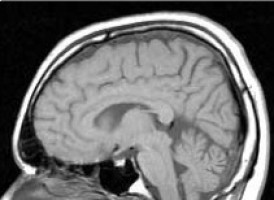
A poorly understood mutation in the brain cancer glioblastoma (GBM) is now being implicated for the first time as the driver of rare but deadlier cases of the disease, a team of researchers from the Perelman School of Medicine at the University of Pennsylvania and the Ludwig Institute for Cancer Research reported this week in Cancer Cell.
While the study links the mutation to worse survival rates than what's typically seen in GBM, it offers fresh hope for the small group of patients who harbour it: complementary preclinical work performed at Ludwig suggests targeting the mutation with an investigational drug or other targeted therapies may reduce the tumour's size and extend lives.
Analysing the genetic, clinical and imaging data from 260 GBM cases housed at Penn Medicine, the researchers discovered that patients with an epidermal growth factor receptor (EGFR) mutation, known as A289D/T/V, had increased tumour invasion compared to the rest of the cohort and an overall survival rate of six months.
The median overall survival for GBM patients is 15 months.
EGFR is amplified in nearly 60 percent of cases, and EGFR mutations occur frequently in the disease.
The most common, EGFRvIII, is found in 30 percent of patients.
About six percent of patients, the researchers found, have the A289D/T/V mutation. With over 400 GBM patients, Penn has one of the largest data sets, second only to the National Institutes of Health's Cancer Genome Atlas.
Without it, researchers likely wouldn't have been able to recognise the significance of the mutation.
"Having such a large number of cases helped paint a clearer picture about this rarer EGFR mutation, that these patients die sooner and have invasive and proliferative tumours," said first author Zev A. Binder, MD, PhD, a senior research investigator in Neurosurgery.
"But we also needed to drill down deeper to the cellular level to confirm and better understand what we were seeing in patients with this mutation, the so-called 'gas pedal' driving tumour growth, and how to potentially stop it."
The Penn team, including lead investigator and senior author, Donald M. O'Rourke, MD, the John Templeton, Jr. MD associate professor of Neurosurgery and a member of Penn's Abramson Cancer Center, collaborated with Frank Furnari, PhD and his team at Ludwig to conduct a series of preclinical investigations to corroborate Penn's findings.
In cell line models, researchers showed that the A289V mutation lead to EGFR activation and tumour growth, and that mice harbouring the A289V mutation had significantly worse survival rates - 65 percent - compared to those with wildtype (non-mutated) EGFR-expressing tumours.
The study also revealed a striking increase in invasive tumours in the mice.
Next, the researchers administered a monoclonal antibody drug, mAb806, which has shown promise in phase I and II clinical trials for GBM patients, to mutated mice.
The drug specifically recognises EGFRvIII and wildtype EGFR, but it also has a high degree of specificity for the A289V mutation, hypothesised based on structural data from Laura Orellana, one of the co-authors.
The therapy significantly reduced tumour growth and enhanced animal survival in mice expressing the A289V mutation, as well as mice with the EGFRvIII mutation.
It only had a mild effect on the wildtype EGFR mice, the team reported.
"Glioblastoma is a heterogeneous enough of a disease that I don't think we will find that one single target that will stop all the cancers cell from growing," Binder said.
"But showing that we can increase survival in mice by targeting this specific mutation means that we are hitting a significant number of tumour cells and blocking what is really driving their growth. That tells me that if we directly target the mutation in these patients, it may make a significant impact."
Penn researchers will continue to focus on targeted therapeutic possibilities to treat patients with this mutation, as well as others.
What's more, because the mutation is tumour specific and extracellular, it's an attractive target for immunotherapy approaches, the researchers said.
Currently, GBM, which is diagnosed in about 22,000 Americans a year, has four U.S. Food and Drug Administration-approved therapies.
But tumours often become resistant to these therapies, and in general only 50 percent of people with the cancer live longer than 15 months, underscoring the need for improved approaches to treat the disease.
Meanwhile, Ludwig researchers will continue to explore unanswered questions about the basic mechanisms underlying this invasive type of GBM to push the work further.
"This multi-institutional collaboration has allowed us to take the clinical data and combine it with basic-science aspects to present a well-rounded story of translational research into GBM," O'Rourke said.
"These results show us that mAb806 is a viable therapeutic option for tumours expressing EGFR mutations, other than EGFRvIII, that should be investigated further. And that we should not ignore these less-frequent GBM mutations, as they provide valuable insight for not only patient stratification, but also the other mutations common in this population. There is the potential for broader applicability beyond just a single target."
Source: Perelman School of Medicine
The World Cancer Declaration recognises that to make major reductions in premature deaths, innovative education and training opportunities for healthcare workers in all disciplines of cancer control need to improve significantly.
ecancer plays a critical part in improving access to education for medical professionals.
Every day we help doctors, nurses, patients and their advocates to further their knowledge and improve the quality of care. Please make a donation to support our ongoing work.
Thank you for your support.